Wildflower gardens offer an enchanting way to create natural beauty while supporting local informal plantings combine the charm of cottage gardens with environmental benefits, attracting beneficial insects and requiring minimal maintenance once prairie-inspired meadows to woodland clearings filled with native blooms, wildflower gardens adapt to various landscapes and design you're working with a small urban space or sprawling rural property, these diverse approaches showcase how wildflower gardens can transform any outdoor area into a vibrant, sustainable paradise that changes with the seasons and provides year-round visual interest.

1. Native Prairie Wildflower Meadow Garden
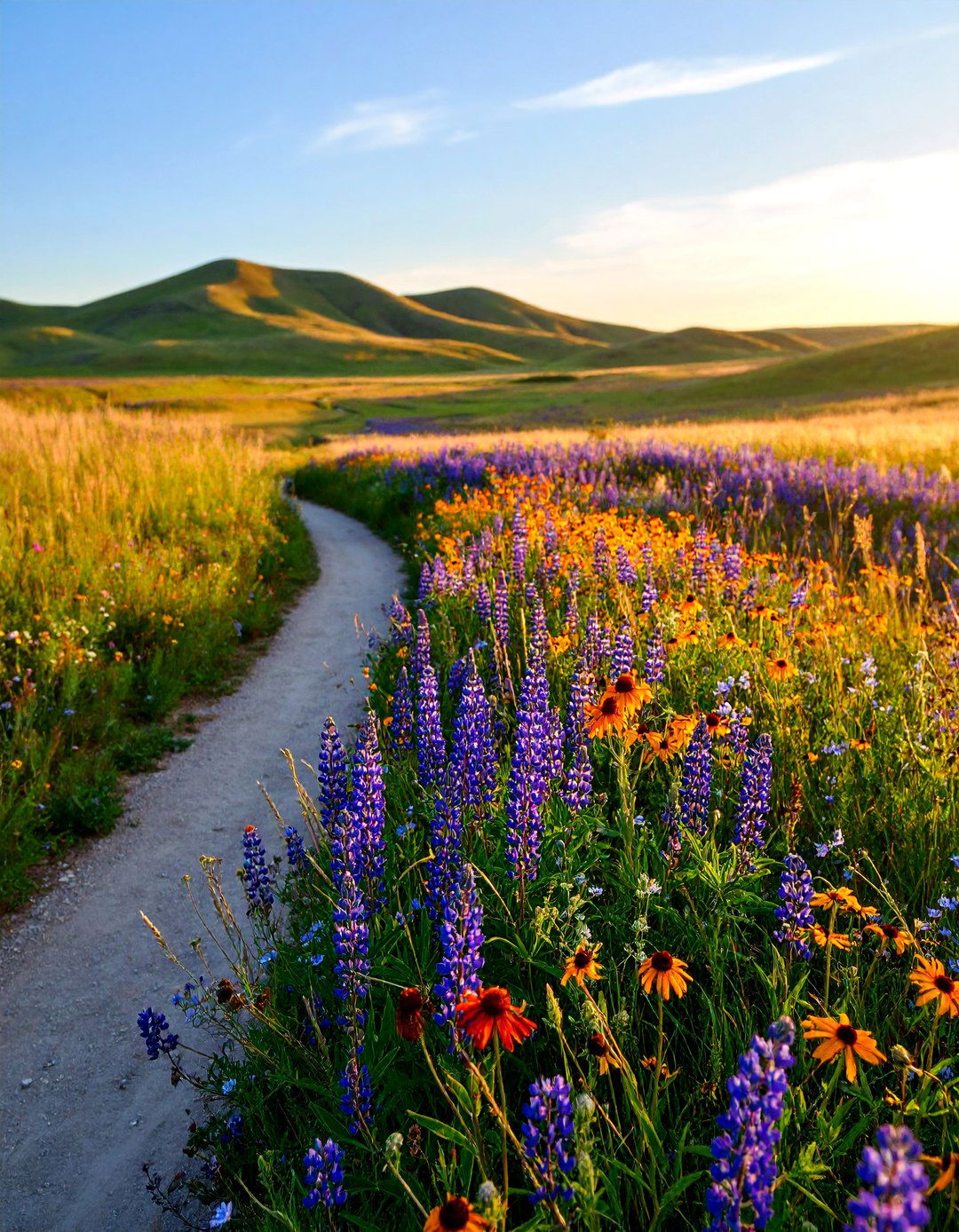
Transform your landscape into a stunning prairie meadow by combining tall native grasses with colorful wildflowers in naturalistic design features expansive plantings of purple coneflower, black-eyed Susan, and wild bergamot interwoven with little bluestem and meandering mowed pathways through the meadow to provide access and visual layout mimics natural prairie patterns with plants grouped in irregular masses rather than formal native milkweed varieties to support monarch low-maintenance approach requires annual cutting in late winter and occasional result is a dynamic ecosystem that changes throughout growing seasons, providing habitat for wildlife while creating spectacular displays of seasonal color and texture that rival any formal garden design.
2. Cottage-Style Wildflower Border Garden
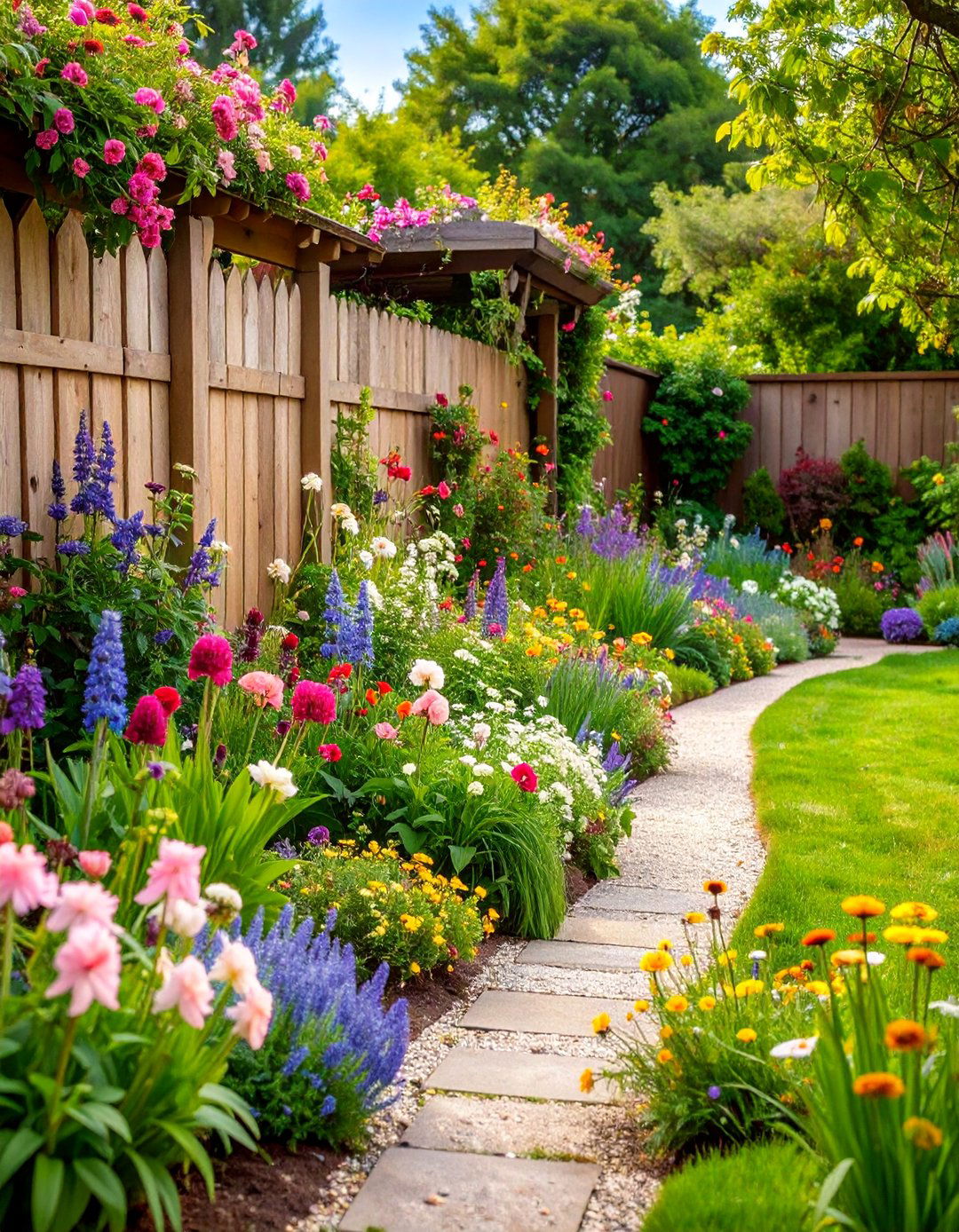
Design a romantic cottage garden border using a charming mixture of wildflowers, herbs, and traditional cottage plants in relaxed, overlapping sweet alyssum, calendula, and larkspur with herbs like lavender and oregano along a rustic wooden fence or stone depth by placing taller hollyhocks and foxgloves at the back, medium-height plants like cosmos and zinnias in the middle, and low-growing creeping thyme and sweet alyssum at the front gravel pathways lined with weathered brick or natural stone vintage garden elements like galvanized watering cans, wooden plant markers, and climbing roses on design captures the informal elegance of traditional English cottage gardens while incorporating easy-care wildflowers that self-seed for continuous blooms throughout the growing season.
3. Woodland Shade Wildflower Garden

Create an enchanting woodland wildflower garden under mature trees using shade-tolerant native plants in naturalistic meandering bark mulch pathways that curve around existing trees while connecting seating areas with rustic log masses of wild ginger, bloodroot, and trillium for early spring interest, followed by summer bloomers like wild columbine, coral bells, and native fallen logs and natural stone groupings as focal points and habitat design emphasizes layers, with tall ferns providing backdrop for medium-height flowering plants and low groundcovers carpeting the forest subtle solar pathway lighting to highlight evening garden approach creates a peaceful retreat that celebrates the natural beauty of woodland environments while providing year-round interest through seasonal wildflower displays and evergreen fern textures.
4. Pollinator Paradise Butterfly Garden

Design a specialized wildflower garden focused on attracting and supporting butterflies throughout their lifecycle with carefully selected native plants arranged in sunny, sheltered curved planting beds filled with nectar-rich flowers like purple coneflower, bee balm, and butterfly weed, grouped in large drifts for maximum visual host plants such as native milkweed, wild lupine, and spicebush for butterfly shallow puddling areas using natural stone and sand for butterfly hydration flat stone basking spots and wind protection through strategically placed shrubs or decorative both early and late-season bloomers to provide continuous nectar sources from spring through layout features meandering pathways that allow close observation without disturbing butterfly activity, creating an educational and beautiful garden space that actively supports local butterfly populations.
5. Drought-Resistant Desert Wildflower Garden

Create a stunning xeriscape wildflower garden using drought-tolerant native plants arranged in naturalistic groupings with decorative gravel mulch and stone the space around natural elevation changes or created berms to improve drainage while adding visual colorful desert wildflowers like desert lupine, brittlebush, and penstemon among drought-adapted grasses and decorative boulder groupings and weathered wood elements as structural meandering pathways using decomposed granite or flagstone stepping design incorporates efficient drip irrigation hidden beneath decorative mulch for establishment sculptural agaves or yuccas as focal points while maintaining the informal wildflower water-wise approach demonstrates how desert environments can support spectacular wildflower displays while conserving water resources and creating low-maintenance landscapes that thrive in challenging growing conditions.
6. Seasonal Color Wave Wildflower Garden
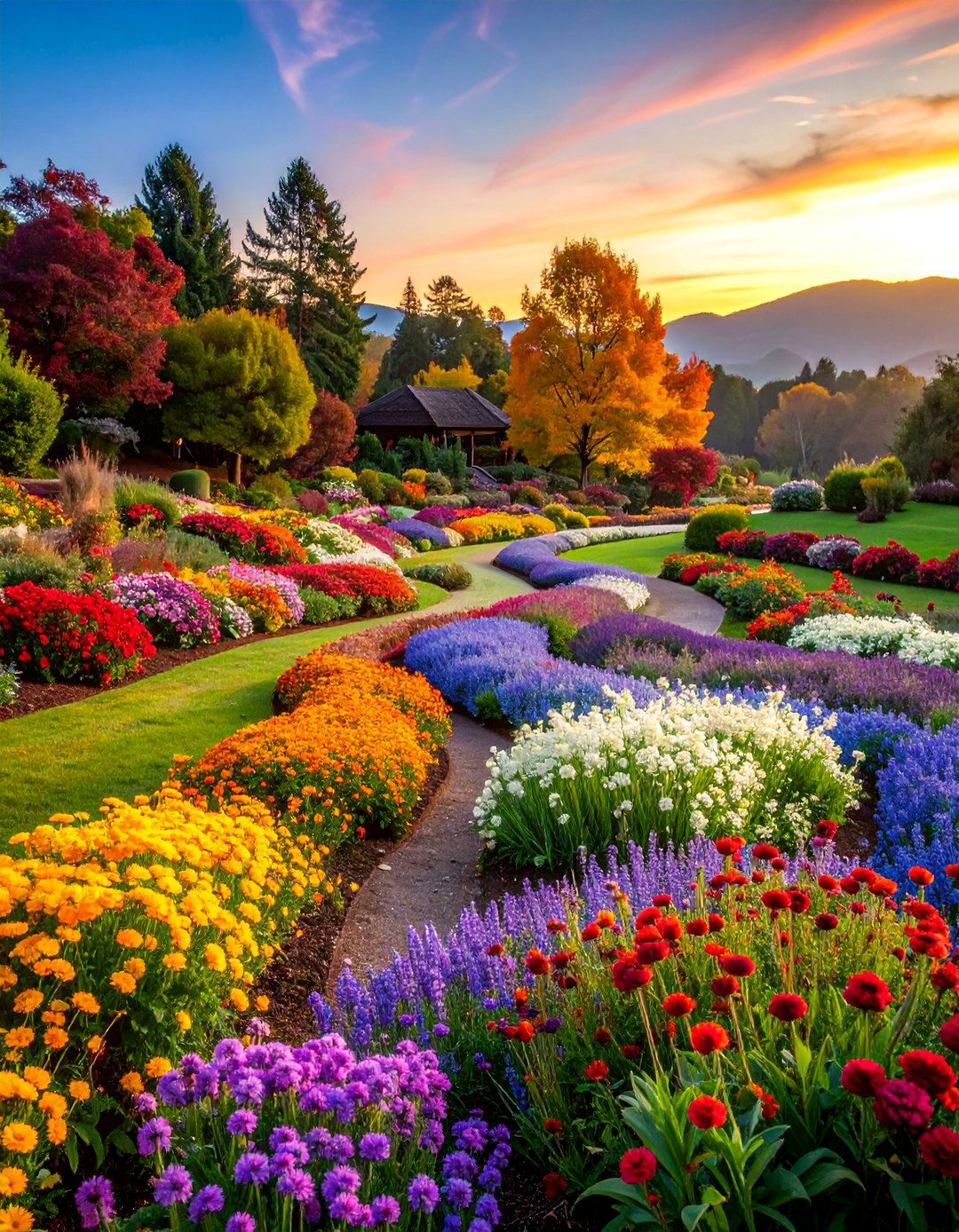
Design a dynamic wildflower garden that creates continuous waves of color throughout the growing season using carefully planned succession plantings and diverse bloom plants in flowing, curved beds that mimic natural color progressions from cool spring tones through vibrant summer hues to warm autumn with early bulbs and cool-season wildflowers like larkspur and sweet peas, followed by summer performers including cosmos, sunflowers, and zinnias, finishing with fall bloomers like asters and meandering pathways that showcase each seasonal display while providing access for maintenance and evergreen shrubs as backbone plantings to provide winter design features overlapping bloom periods to ensure seamless transitions between seasons, creating a garden that remains visually interesting and colorful from early spring through late fall while supporting pollinators throughout the extended growing period.
7. Cutting Garden Wildflower Paradise

Create a productive wildflower garden specifically designed for harvesting beautiful bouquets while maintaining ornamental appeal throughout the growing plants in orderly rows or blocks for easy access and cutting, while maintaining the informal charm of wildflower gardens through diverse plant selections and natural color long-stemmed varieties like sunflowers, cosmos, zinnias, and celosia alongside foliage plants such as dusty miller and ornamental wide pathways between planting areas using mulch or stepping stones for comfortable harvesting a dedicated work area with potting bench, water source, and tool storage near the succession planting areas for continuous bloom production and designated growing areas for specialty flowers like statice and globe functional design provides abundant cut flowers for indoor arrangements while creating an attractive outdoor display that combines the beauty of wildflower gardens with practical harvesting capabilities.
8. Moonlight White Wildflower Garden
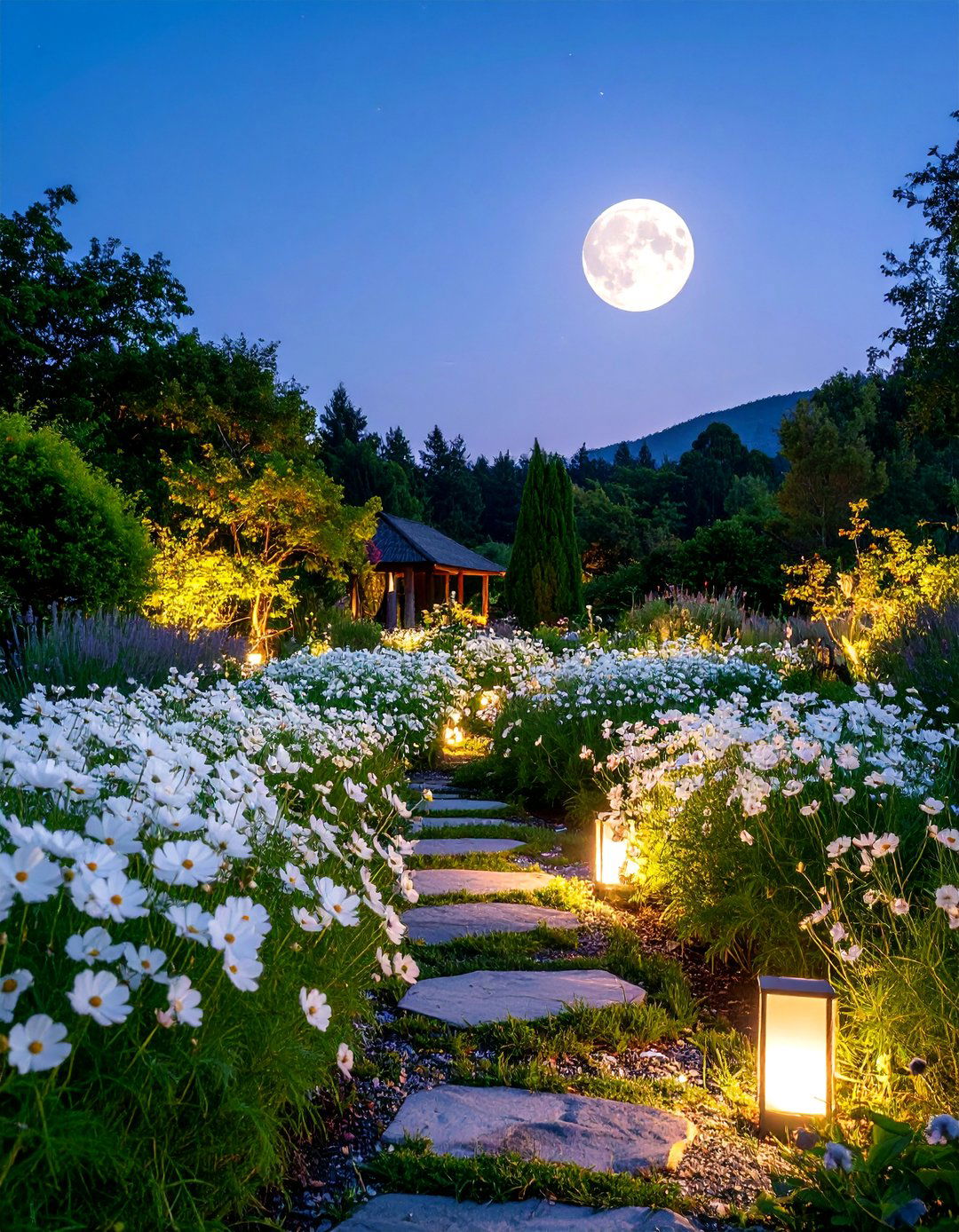
Design an elegant monochromatic wildflower garden featuring exclusively white and silver-foliage plants that create a sophisticated, luminous display especially stunning in evening white varieties of cosmos, cleome, and nicotiana with silver-leaved plants like dusty miller, lamb 's ear, and artemisia for textural flowing, curved bed shapes that emphasize the garden' s ethereal quality while providing visual movement and white ornamental grasses such as variegated Japanese forest grass or fountain grass for structural subtle pathway lighting using solar fixtures to enhance the moonlit garden effect during evening fragrant white flowers like moonflower, four o'clocks, and night-blooming cereus for sensory design creates a peaceful, contemplative space that appears to glow in twilight while providing a sophisticated color scheme that complements any architectural style and creates stunning photographic opportunities.
9. Rock Garden Alpine Wildflower Display
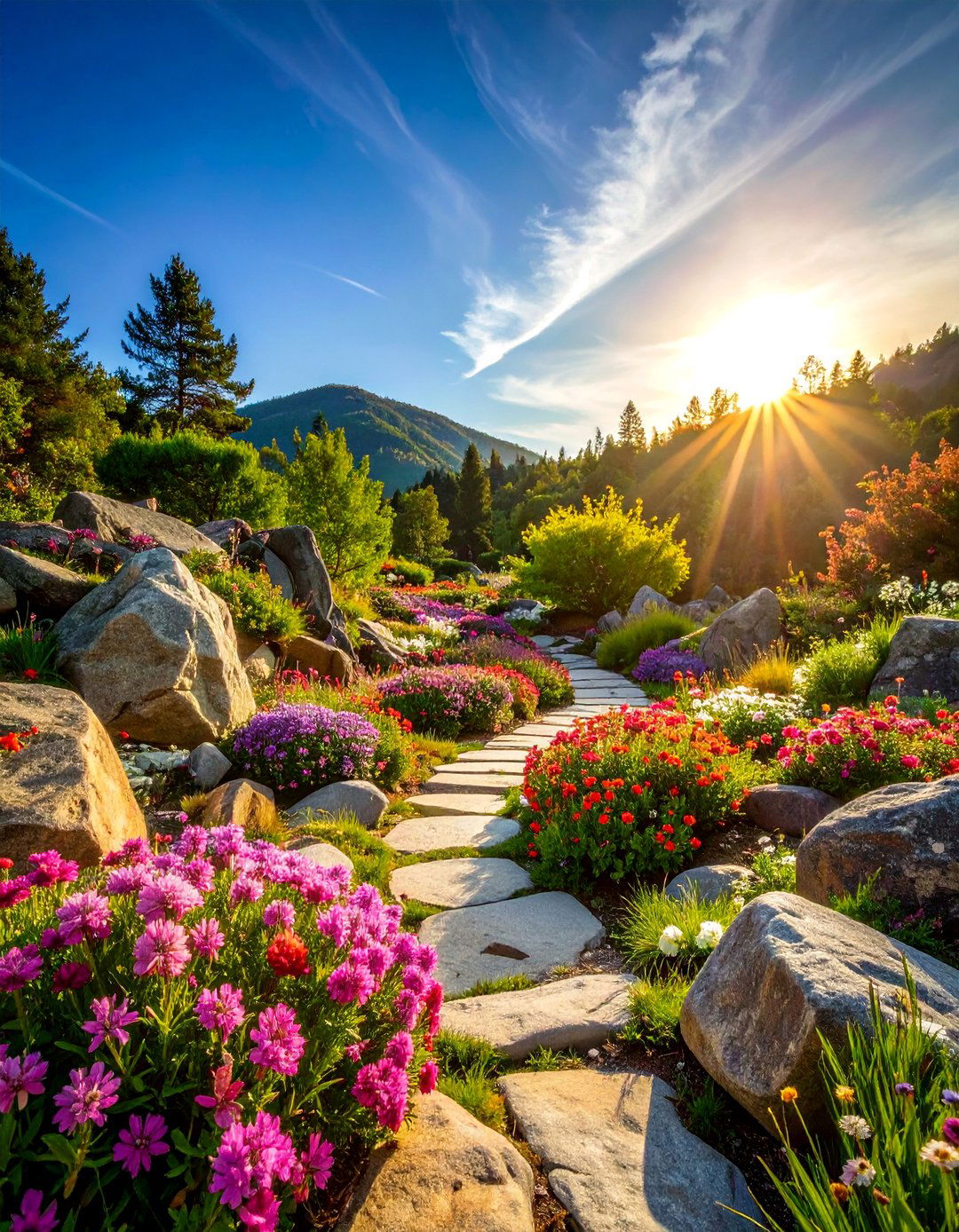
Create a naturalistic rock garden featuring alpine and mountain wildflowers nestled among carefully arranged boulders and stone outcroppings with excellent the space using native stone in various sizes to create natural-looking formations with planting pockets filled with well-draining soil mountain wildflowers like alpine asters, wild lupine, and Indian paintbrush alongside drought-tolerant sedums and native meandering pathways using natural stone steps or gravel for access to different garden design incorporates seasonal water features like small cascades or rock pools during snowmelt weathered wood elements such as split-rail fencing or rustic benches that complement the mountain approach recreates high-altitude environments while showcasing specialized wildflowers that thrive in rocky, well-drained conditions, creating a unique garden space that captures the rugged beauty of mountain landscapes.
10. Container Wildflower Patio Garden

Transform patios, decks, or small spaces into vibrant wildflower gardens using diverse container plantings arranged in attractive groupings for maximum visual containers of varying heights, sizes, and materials including galvanized tubs, wooden barrels, and ceramic pots to create visual interest and accommodate different plant containers with compact wildflowers like dwarf sunflowers, cosmos, and marigolds, combined with trailing varieties such as sweet alyssum and nasturtiums for cascading focal points using larger containers with dramatic plants like ornamental grasses or tall wildflower mobile plant stands or wheeled containers for seasonal rearrangement irrigation systems using soaker hoses or drip systems to maintain consistent approach brings wildflower garden beauty to urban environments, rental properties, or areas with poor soil conditions while allowing complete control over growing conditions and garden design changes.
11. Hummingbird Haven Wildflower Garden
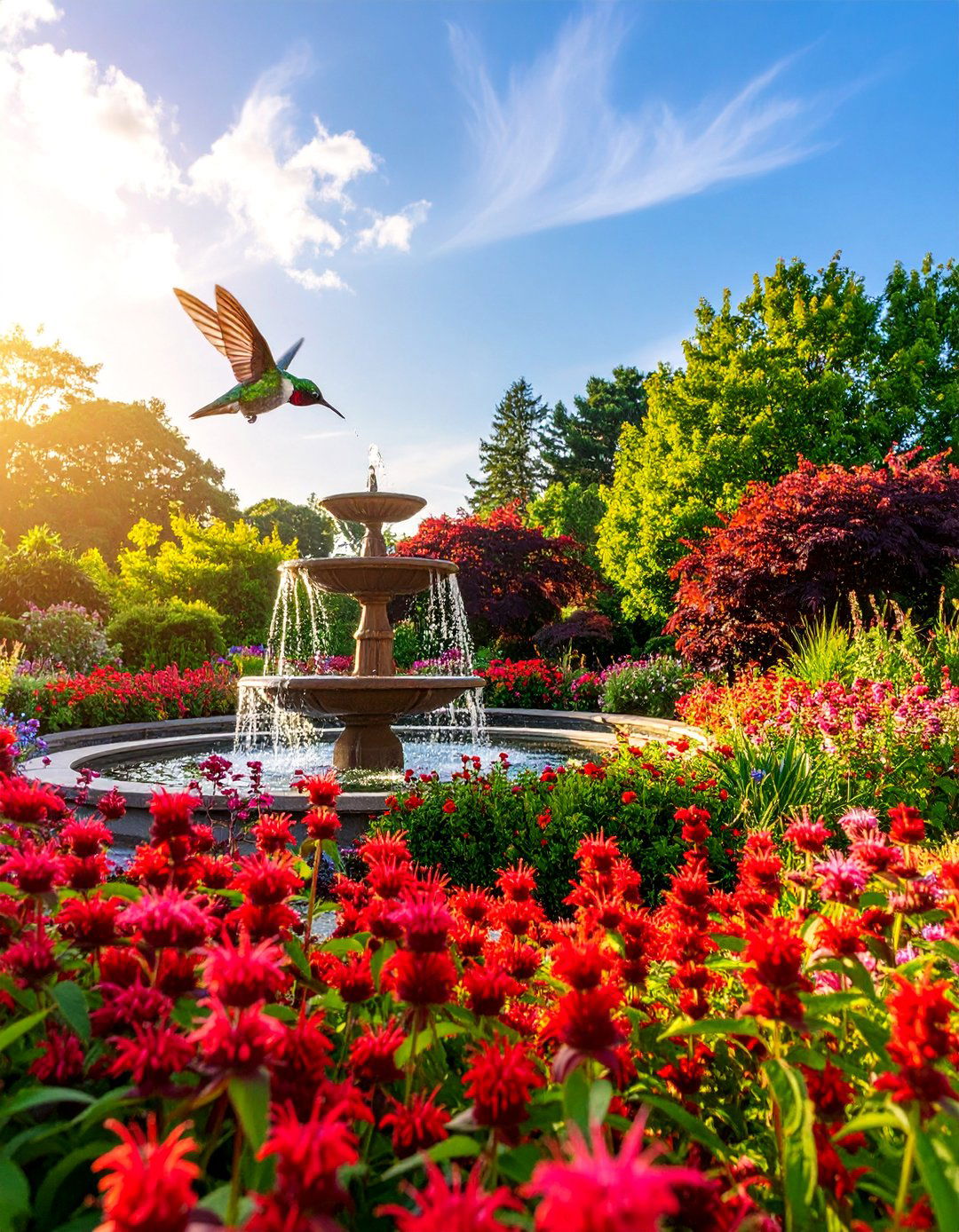
Design a specialized wildflower garden focused on attracting hummingbirds using tubular, nectar-rich flowers arranged in dense plantings near seating areas for optimal viewing layered plantings with tall background plants like cardinal flower, bee balm, and native honeysuckle, mid-height plants such as wild bergamot and penstemon, and low-growing groundcovers like wild water features such as shallow fountains or misters for hummingbird bathing and drinking the space around natural or created perching spots using bare tree branches or decorative garden red accent features like garden ornaments or plant markers since hummingbirds are attracted to bright windbreak areas using shrubs or trellises to provide shelter during layout includes multiple viewpoints from indoor windows and outdoor seating areas, allowing intimate observation of hummingbird behavior while creating a dynamic, colorful garden space filled with constant movement and activity.
12. Medicinal Herb Wildflower Combination Garden

Create a functional wildflower garden that combines beautiful ornamental wildflowers with traditional medicinal herbs in attractive, organized plantings that serve both aesthetic and practical raised beds or defined planting areas using natural materials like stone or untreated wood to separate different herb families while maintaining informal wildflower traditional medicinal plants like echinacea, calendula, and chamomile alongside culinary herbs such as oregano, thyme, and dedicated harvesting and processing areas with drying racks, work surfaces, and storage solutions integrated into the garden interpretive signage or plant markers identifying medicinal uses and preparation pathways wide enough for wheelbarrow access during harvesting layout emphasizes both beauty and functionality, creating an educational garden space that demonstrates the historical connection between wildflowers and human health while providing sustainable sources of natural remedies and herbal preparations.
13. Water-Wise Wildflower Rain Garden
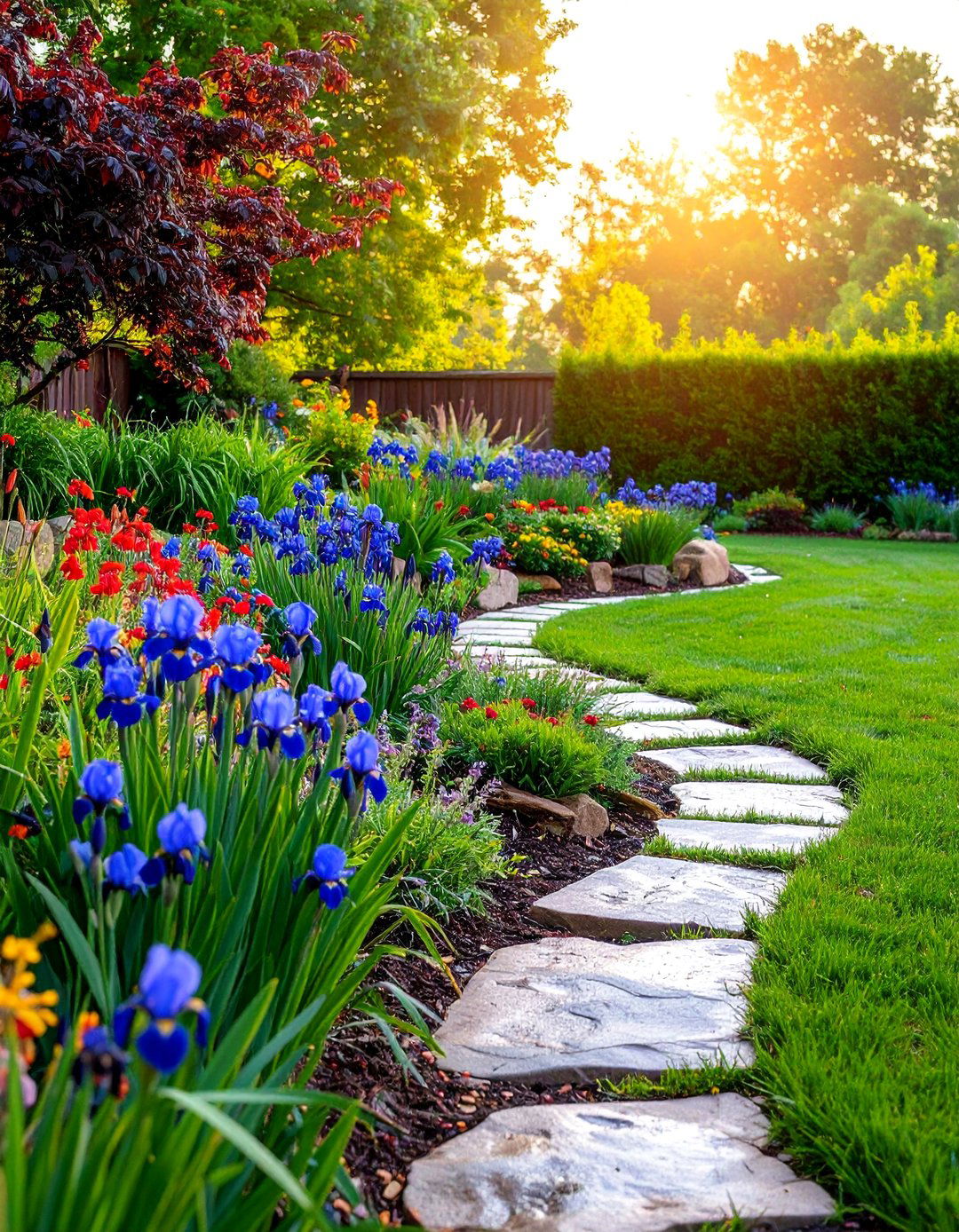
Design an innovative wildflower garden in a natural or created depression that captures and filters stormwater runoff while showcasing beautiful native plants adapted to varying moisture gentle slopes leading to the garden center using permeable materials and strategic plant placement to slow water flow and prevent wildflowers and grasses that tolerate both wet and dry periods, including blue flag iris, cardinal flower, and native sedges for the wettest areas, transitioning to black-eyed Susan and purple coneflower on higher, drier decorative stone placement for visual interest and erosion overflow areas and pathways that remain accessible during wet educational signage explaining the garden's environmental benefits and water filtration sustainable approach manages stormwater naturally while creating habitat for amphibians and waterfowl, demonstrating how beautiful wildflower gardens can solve practical environmental challenges while providing year-round visual appeal.
14. Victorian-Style Formal Wildflower Parterre

Create an elegant formal garden design that incorporates wildflowers within structured geometric patterns reminiscent of Victorian-era parterres while maintaining naturalistic plant intricate bed shapes using low boxwood hedging or decorative edging materials to create formal compartments filled with carefully selected wildflower central focal points such as ornamental fountains, sundials, or sculptural elements surrounded by radiating wildflower color-themed sections with plants like purple salvia, white sweet alyssum, and yellow marigolds arranged in repeating formal pathways using brick, gravel, or flagstone with precise geometric period-appropriate garden furniture like wrought iron benches and decorative plant climbing roses or clematis on formal arbors and trellises for vertical sophisticated approach combines the structured elegance of formal garden design with the natural beauty and environmental benefits of wildflower plantings, creating a unique garden style that bridges formal and informal design principles.
15. Wildflower Meadow Path Garden

Design a romantic wildflower garden featuring meandering pathways that wind through naturalistic meadow plantings, creating an immersive walking experience through diverse seasonal the main pathway using natural materials like wood chips, gravel, or stepping stones, with narrower side paths leading to secluded seating areas or garden focal the meadow areas with sweeping drifts of complementary wildflowers like cosmos, bachelor buttons, and poppies, allowing for natural self-seeding and informal periodic pathway widening areas with benches or rest stops positioned to showcase the best garden the route to reveal different garden scenes progressively, creating anticipation and discovery around each subtle directional markers or interpretive signs highlighting seasonal highlights and plant pathway design accommodates maintenance access while preserving the natural meadow aesthetic, creating a garden experience that encourages slow exploration and intimate connection with wildflower beauty throughout the growing season.
16. Children's Discovery Wildflower Garden

Create an educational and interactive wildflower garden specifically designed to engage children 's curiosity while teaching about native plants, pollinators, and natural ecosystems through hands-on garden low raised beds and accessible pathways that accommodate children of different ages and abilities, using natural materials like logs and stones for seating and pathway fast-growing, colorful wildflowers like sunflowers, zinnias, and marigolds that provide quick gratification and easy seed collection dedicated spaces for children' s gardening activities with child-sized tools, watering stations, and weather-resistant storage interactive elements like butterfly houses, bee observation hives, and magnifying stations for close plant sensory plants with interesting textures, fragrances, and seed pods for tactile interpretive features using colorful signs, plant identification games, and seasonal activity educational approach fosters environmental stewardship while creating lasting memories and connections to nature through beautiful wildflower garden experiences.
17. Coastal Dune Wildflower Garden
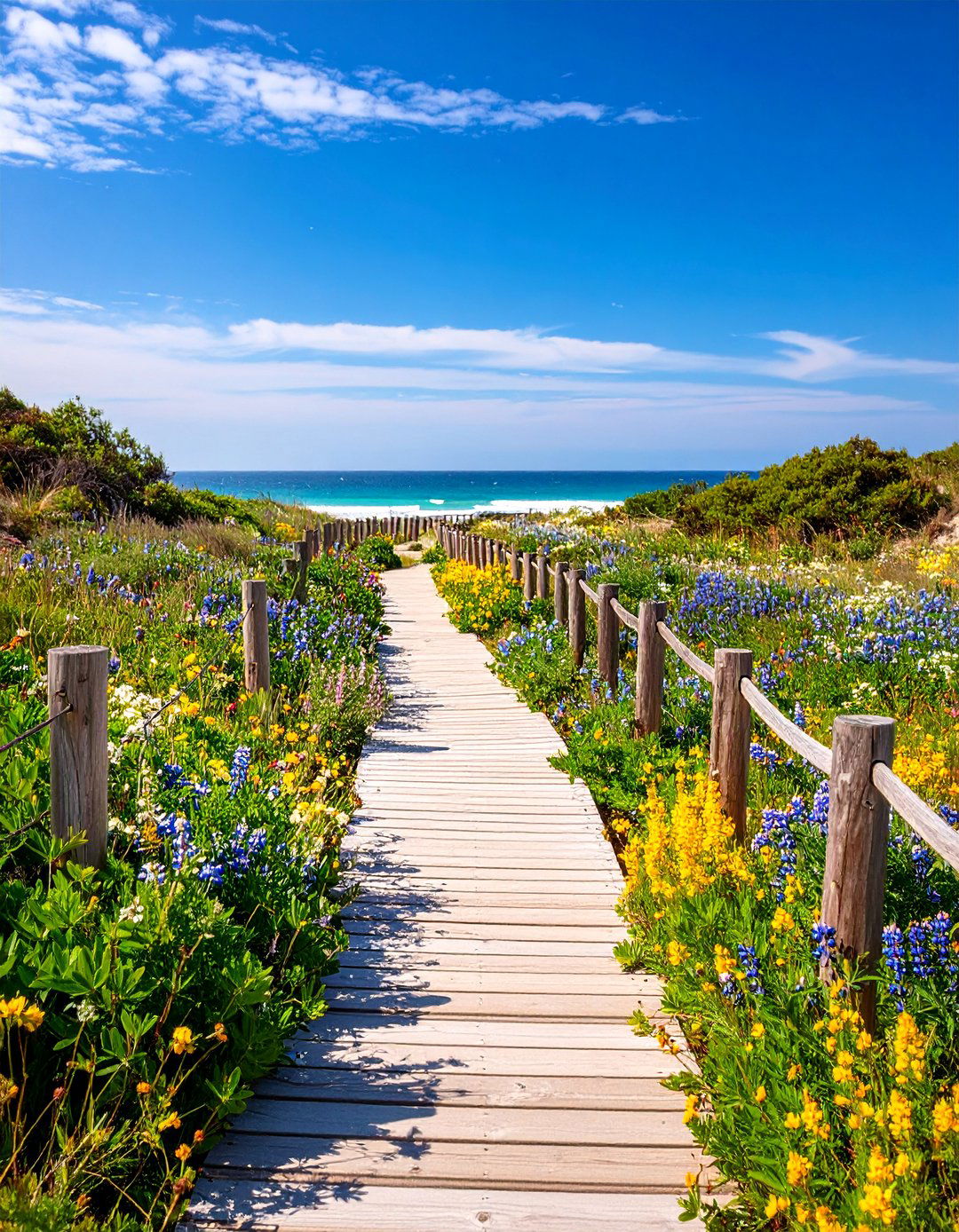
Design a specialized wildflower garden adapted to coastal conditions using salt-tolerant native plants arranged in naturalistic dunes and swales that withstand ocean winds and sandy artificial or enhanced natural dune formations using sand and organic matter while installing wind barriers like driftwood fencing or native shrub plantings for hardy coastal wildflowers such as beach pea, seaside goldenrod, and salt marsh asters combined with native grasses like American beachgrass and switchgrass for soil weathered wood elements like boardwalks, viewing platforms, and seating areas that complement the coastal aesthetic while providing erosion-resistant the space to capture and channel coastal breezes for natural cooling while protecting delicate plants in sheltered decorative elements using naturally collected driftwood, shells, and beach specialized approach creates stunning wildflower displays that thrive in challenging coastal environments while providing essential habitat for migrating birds and coastal wildlife.
18. Autumn Glory Late-Season Wildflower Garden
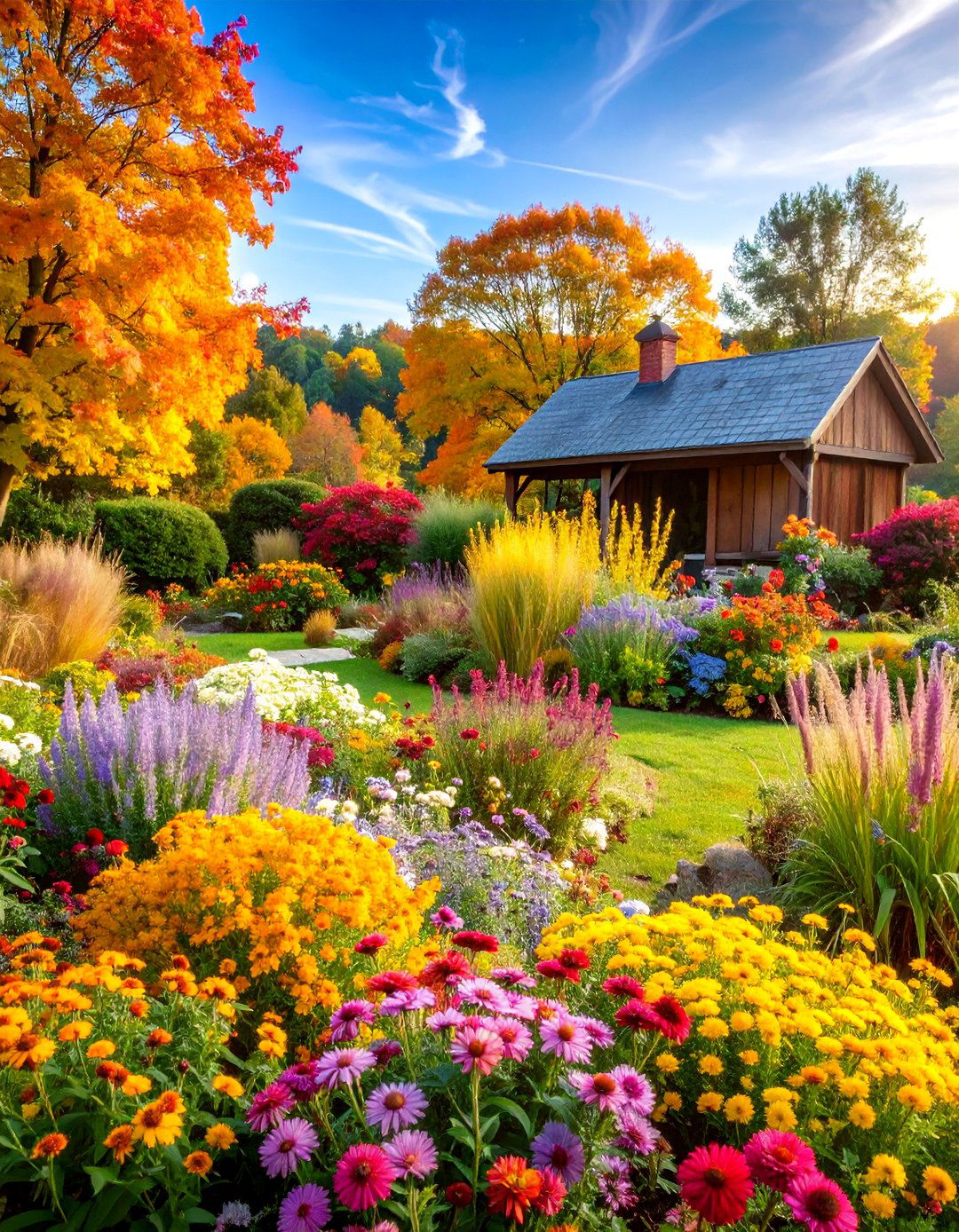
Create a spectacular wildflower garden designed specifically to provide peak color and interest during fall months when most gardens are declining, using late-blooming native plants and ornamental grasses for extended seasonal the space around autumn-flowering plants like New England asters, goldenrod, Joe Pye weed, and fall-blooming sedum arranged in bold, sweeping masses for maximum visual ornamental grasses such as little bluestem, fountain grass, and miscanthus that provide structural beauty and movement in autumn warm-toned color schemes using burgundy, gold, orange, and deep purple flowers combined with grasses that turn spectacular autumn decorative elements like harvest-themed containers, corn stalks, and pumpkin displays that complement the natural autumn wildflower late-fruiting plants like native viburnums and elderberries that provide food for migrating birds while adding seasonal pathways and seating areas positioned to capture autumn sunlight and showcase the garden's peak seasonal display.
19. Fragrant Evening Wildflower Garden

Design an enchanting wildflower garden featuring plants selected specifically for their evening fragrance and night-blooming characteristics, creating a sensory garden experience perfect for twilight enjoyment and fragrant wildflowers like four o'clocks, evening primrose, and moonflower near seating areas, walkways, and outdoor dining spaces where their scents can be fully day-blooming fragrant plants such as sweet alyssum, mignonette, and wild bergamot that continue releasing fragrance into evening intimate seating areas using pergolas, arbors, or natural stone arrangements surrounded by the most fragrant subtle lighting using solar path lights, string lights, or lanterns that illuminate the garden without overwhelming the natural evening wind barriers or enclosed spaces that help contain and concentrate plant water features like small fountains that add soothing sounds while increasing humidity to enhance fragrance sensory-focused approach creates magical evening garden experiences that engage multiple senses while showcasing the often-overlooked nighttime beauty of wildflower gardens.
20. Heirloom Seed Wildflower Heritage Garden

Create a historically significant wildflower garden featuring heirloom varieties and heritage plants that connect to regional gardening traditions while preserving rare and unusual wildflower genetics for future and source authentic heirloom seeds from historical varieties, focusing on plants with documented local growing history or cultural significance to the the garden using traditional layout patterns and materials that reflect historical gardening practices, including split-rail fencing, gravel pathways, and period-appropriate garden heritage varieties of cosmos, zinnias, marigolds, and other popular wildflowers alongside native plants that were traditionally harvested for food, medicine, or dedicated seed-saving areas with drying facilities, storage solutions, and processing equipment for maintaining pure genetic interpretive signage explaining the historical significance and cultivation methods of featured demonstration areas showing traditional gardening techniques and seasonal maintenance preservation-focused approach maintains biodiversity while creating educational opportunities and beautiful garden displays that honor regional gardening heritage.
21. Vertical Wildflower Trellis Garden

Transform limited garden space into spectacular wildflower displays using creative vertical growing structures that support climbing and trailing wildflower varieties while maximizing planting area in small a series of trellises, arbors, and support structures using natural materials like bamboo, cedar, or reclaimed wood arranged at varying heights and angles for visual climbing wildflowers such as morning glories, scarlet runner beans, and wild lupine alongside supporting structures, with trailing varieties like nasturtiums and sweet peas cascading from elevated multi-level planting opportunities using tiered raised beds, hanging baskets, and wall-mounted containers that accommodate different plant requirements and growing lighting elements that highlight the vertical garden features during evening efficient irrigation systems designed specifically for vertical growing maintenance access through removable panels or strategic pathway space-saving approach demonstrates how vertical growing techniques can create stunning wildflower gardens in urban environments, small yards, or areas with challenging growing conditions while providing abundant blooms throughout the growing season.
22. Wildlife Habitat Wildflower Ecosystem
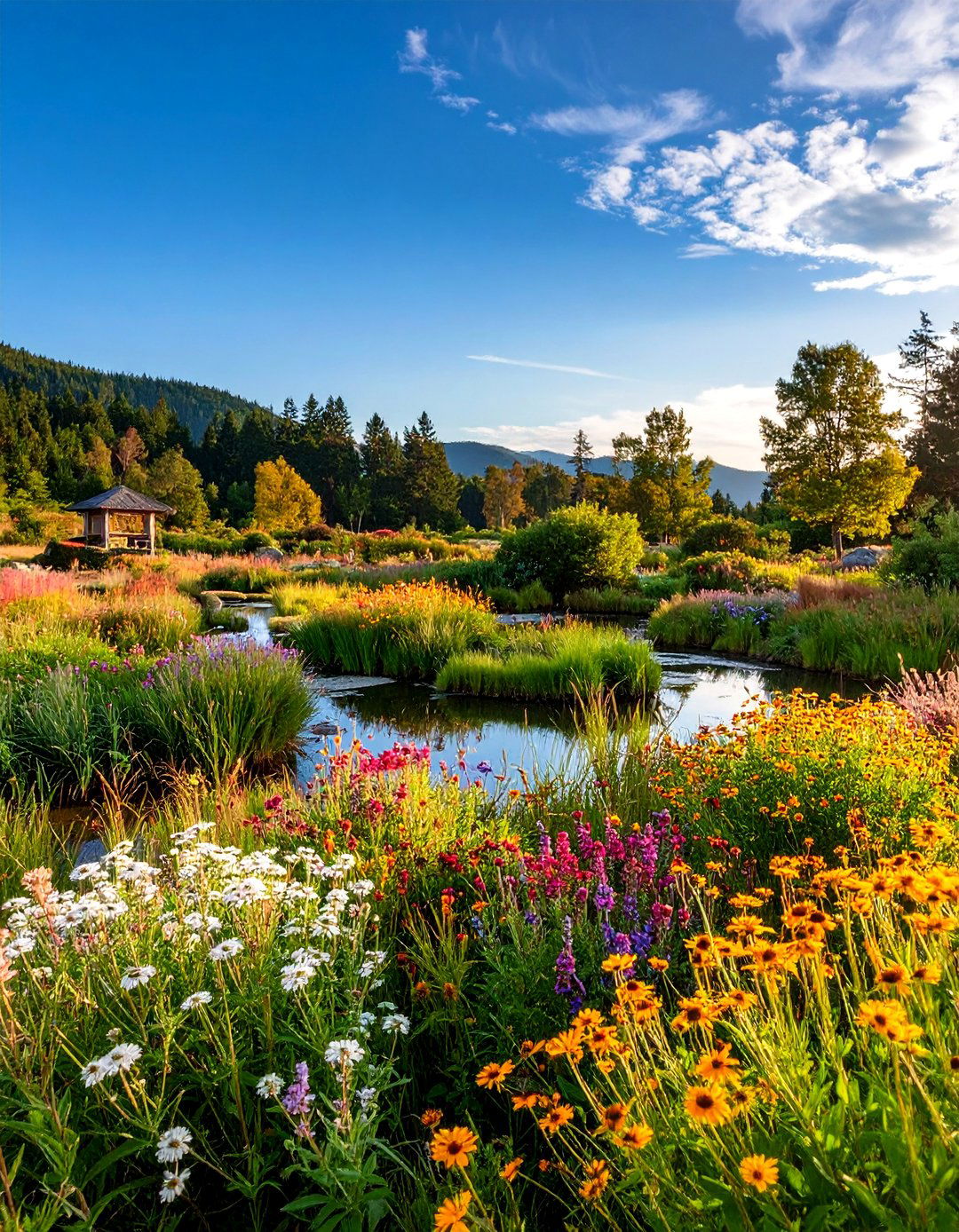
Create a comprehensive wildflower garden designed as a complete wildlife habitat that supports diverse animal species throughout their entire lifecycle while providing year-round food, shelter, and nesting habitat zones including open meadow areas for ground-nesting birds, shrub borders for small mammals, and water features for amphibians and wildflower varieties that provide seeds, nectar, and host plants for butterflies, bees, and beneficial insects while including grasses and sedges for nesting brush piles, stone cairns, and fallen log features that provide shelter and hibernation sites for beneficial insects and small seasonal water sources ranging from shallow puddling areas to deeper pools for different species maintenance practices that support wildlife needs, including leaving seed heads for winter bird food and providing undisturbed areas for overwintering observation blinds or viewing areas that allow wildlife watching without disturbing natural ecosystem approach creates functioning habitat while demonstrating sustainable gardening practices that support biodiversity and environmental health.
23. Color-Themed Wildflower Garden Rooms
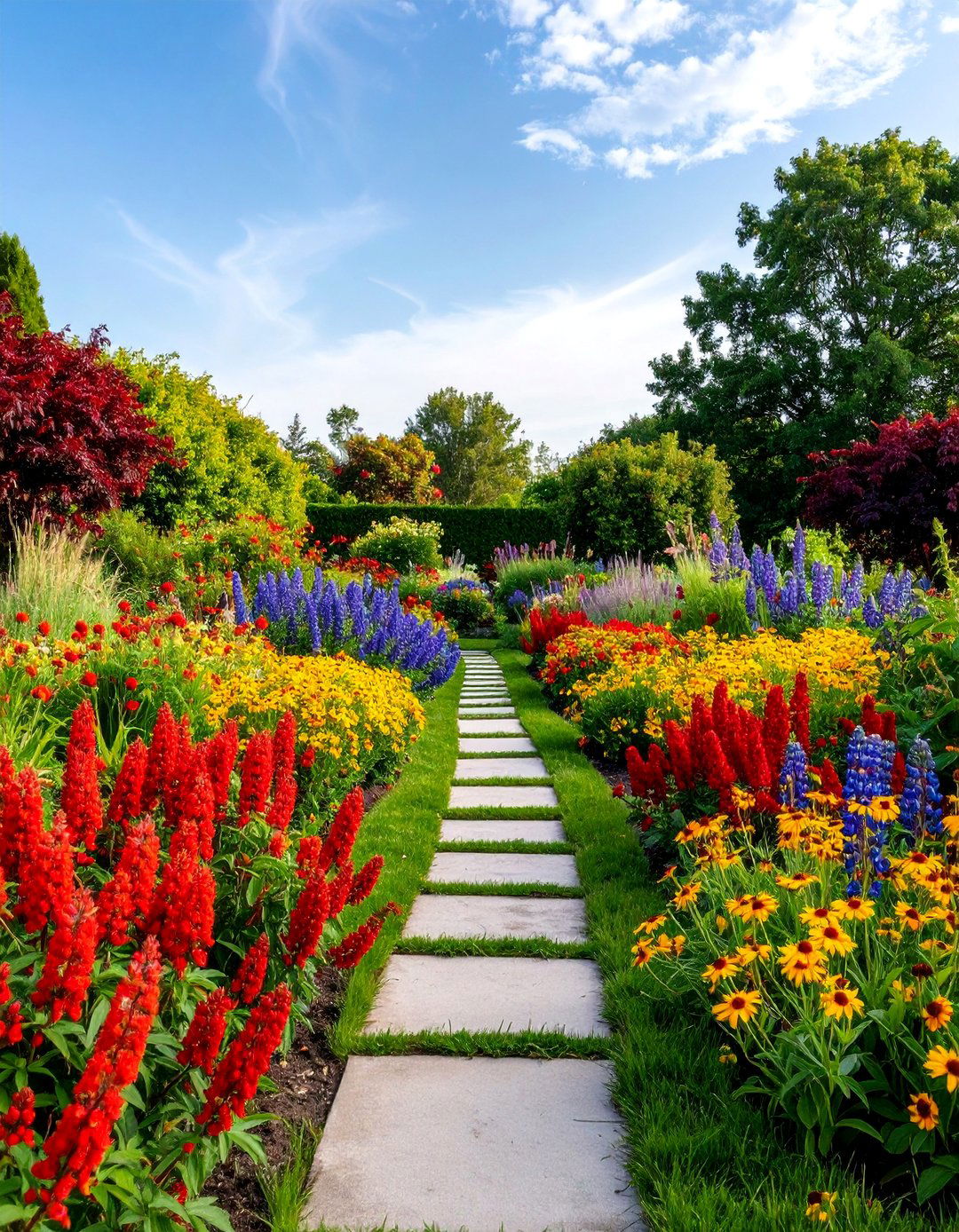
Design a sophisticated wildflower garden divided into separate "rooms" or sections, each featuring distinct color themes that create dramatic seasonal displays and demonstrate various design approaches within a unified overall physical divisions between color zones using natural materials like hedge plantings, split-rail fencing, or stone walls while maintaining visual flow and connection throughout the a red zone featuring cardinal flower, bee balm, and red cosmos, a blue section with wild lupine, bachelor buttons, and asters, and a yellow area with black-eyed Susan, coreopsis, and transitional zones using neutral colors like white or silver that help blend adjacent color pathways that guide visitors through each color experience while providing viewpoints that showcase individual room designs and overall garden seating areas within each colored section for intimate garden enjoyment and photography seasonal succession plantings that maintain color themes throughout growing seasons while providing continuous interest and bloom periods in each garden room.
24. Xerophytic Wildflower Desert Rock Garden

Create a stunning desert-inspired wildflower garden using drought-adapted plants arranged among dramatic rock formations and gravel mulches that recreate natural desert landscapes while conserving water and providing low-maintenance the space using large boulders, weathered stone outcroppings, and decorative gravel in various colors and textures to create natural-looking desert terrain with excellent wildflowers adapted to arid conditions such as desert lupine, ghost plant, brittlebush, and penstemon combined with architectural succulents and ornamental grasses for year-round meandering pathways using decomposed granite or natural stone that wind between rock formations and planting shaded rest areas created by large boulder groupings or simple shade structures for garden enjoyment during hot subtle landscape lighting that highlights interesting rock formations and specimen plants during evening efficient drip irrigation systems hidden within decorative mulch for plant establishment and drought water-wise approach demonstrates how desert aesthetics can create spectacular wildflower gardens while addressing water conservation needs and climate challenges.
25. Succession Planting Continuous Bloom Wildflower Garden
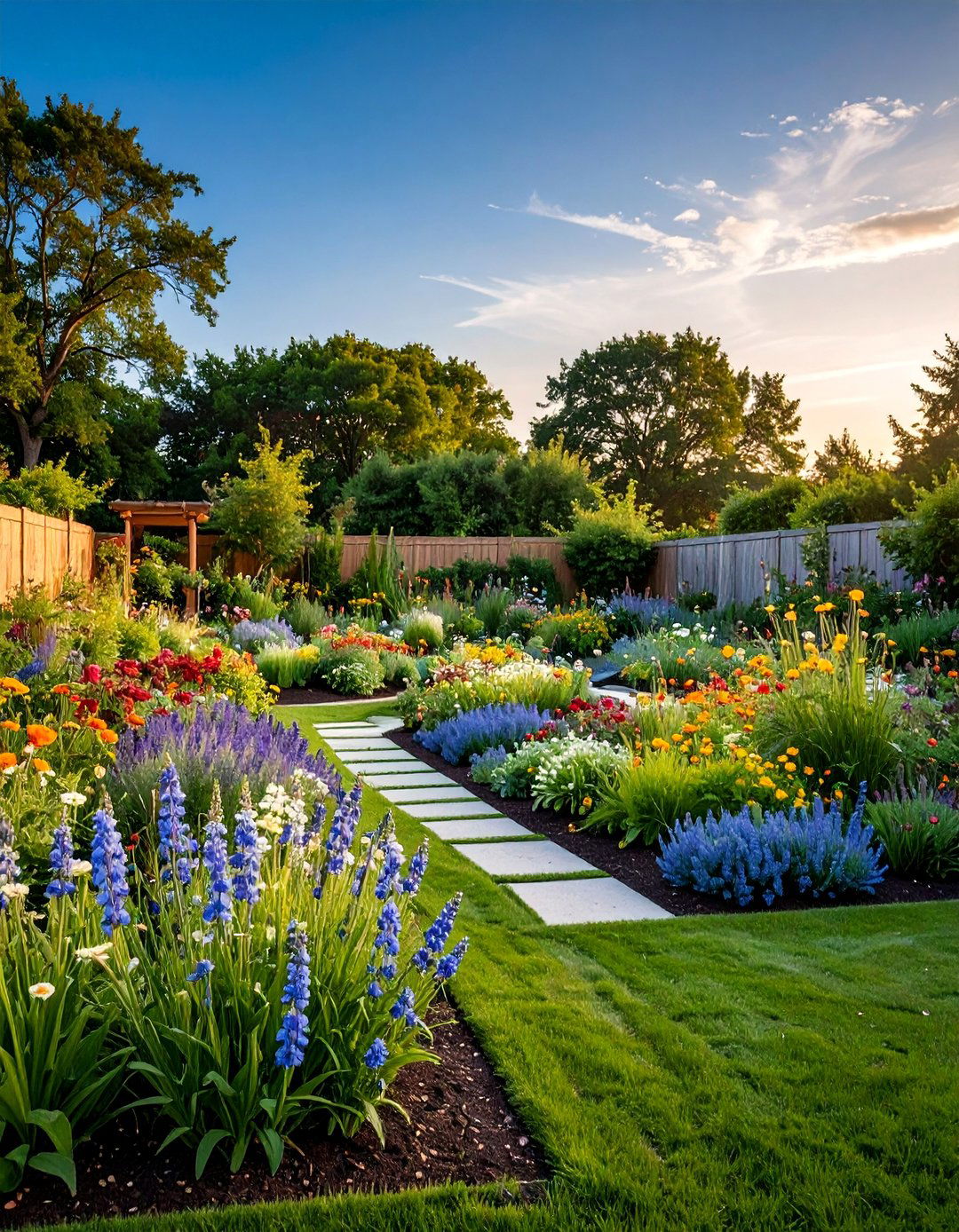
Design an expertly planned wildflower garden that provides continuous blooms throughout the entire growing season using strategic succession planting techniques and carefully selected varieties with complementary bloom times for uninterrupted color detailed planting schedules that ensure seamless transitions between early, mid, and late-season bloomers while maintaining consistent garden appearance and pollinator cool-season wildflowers like larkspur and sweet peas for early spring color, transitioning to summer performers including cosmos, zinnias, and sunflowers, finishing with fall bloomers such as asters and dedicated germination and transplant areas for starting successive crops of annual wildflowers throughout the systematic record-keeping systems that track bloom periods, succession timing, and seasonal performance for continuous garden storage areas for seeds, tools, and seasonal planting supplies organized for efficient succession planting maintenance pathways that provide access for regular planting, harvesting, and care activities without disturbing established intensive management approach creates professional-quality wildflower displays that remain consistently beautiful while demonstrating advanced gardening techniques and seasonal planning strategies.
Conclusion:
Wildflower gardens offer endless possibilities for creating beautiful, sustainable landscapes that benefit both gardeners and 25 design ideas demonstrate how versatile wildflower gardens can be, from formal Victorian parterres to naturalistic prairie approach addresses different site conditions, maintenance preferences, and aesthetic goals while supporting pollinators and local you choose a simple container garden or an elaborate habitat ecosystem, wildflower gardens reward minimal effort with maximum beauty, providing seasons of colorful blooms, wildlife activity, and natural charm that enhances any outdoor space.


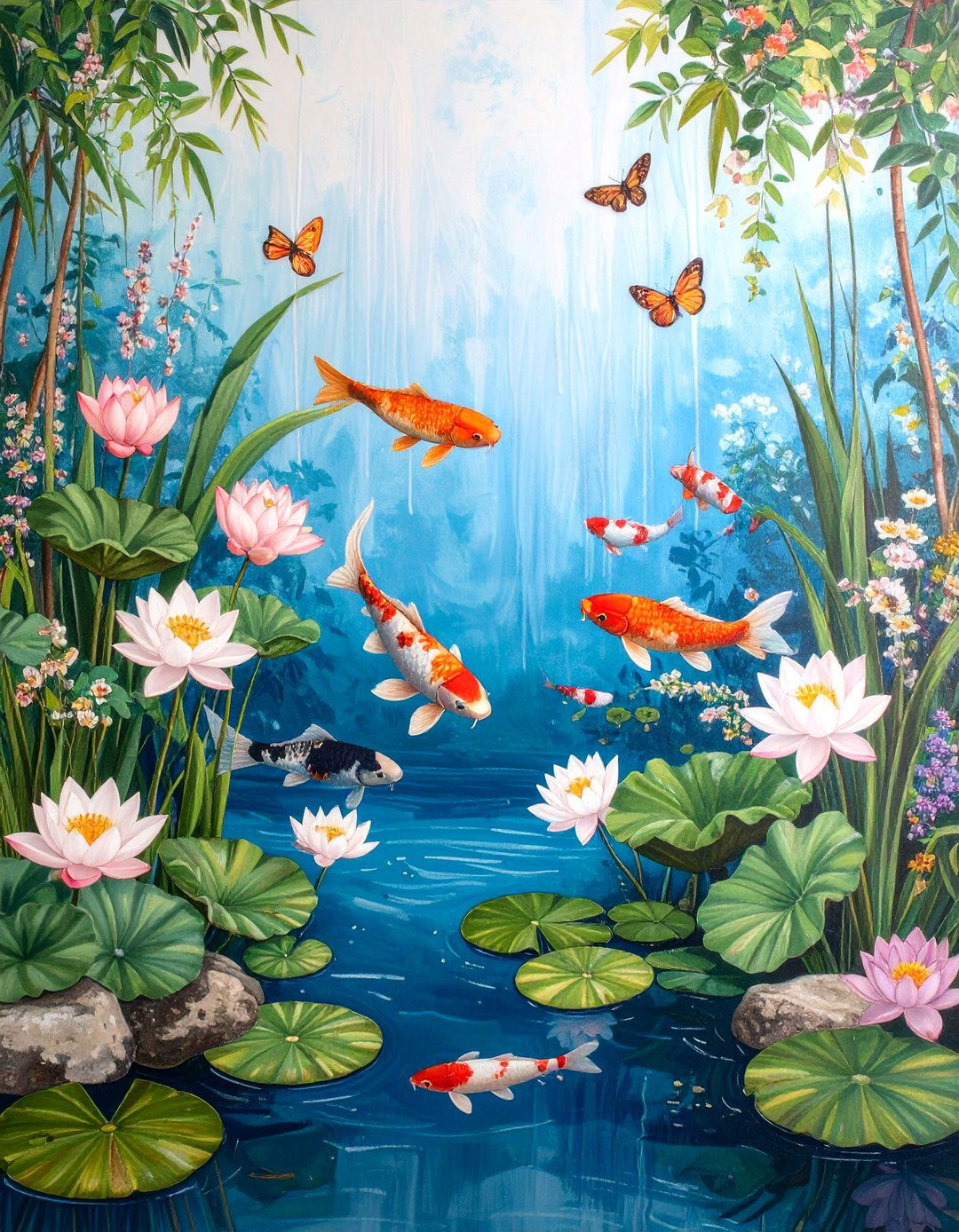
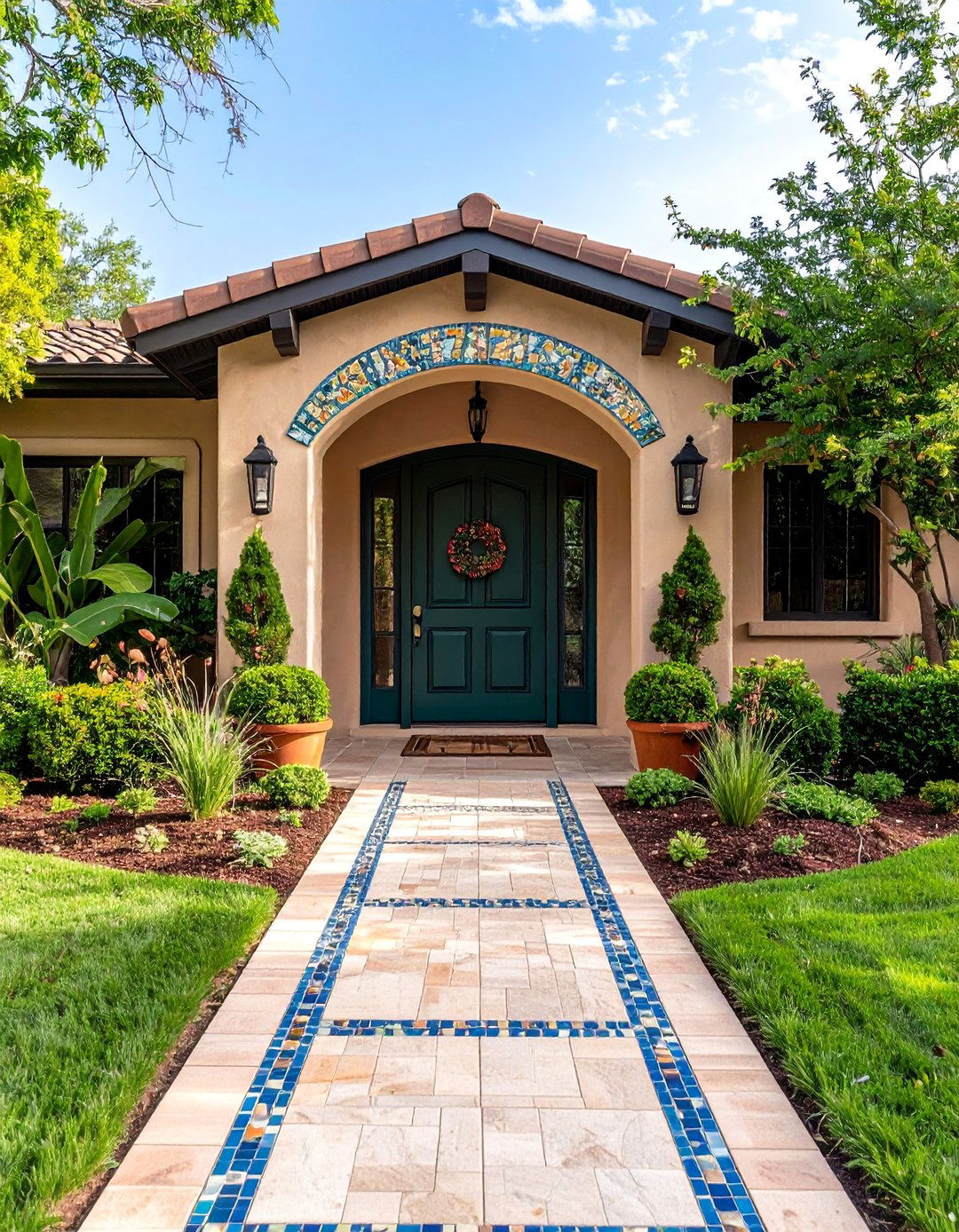
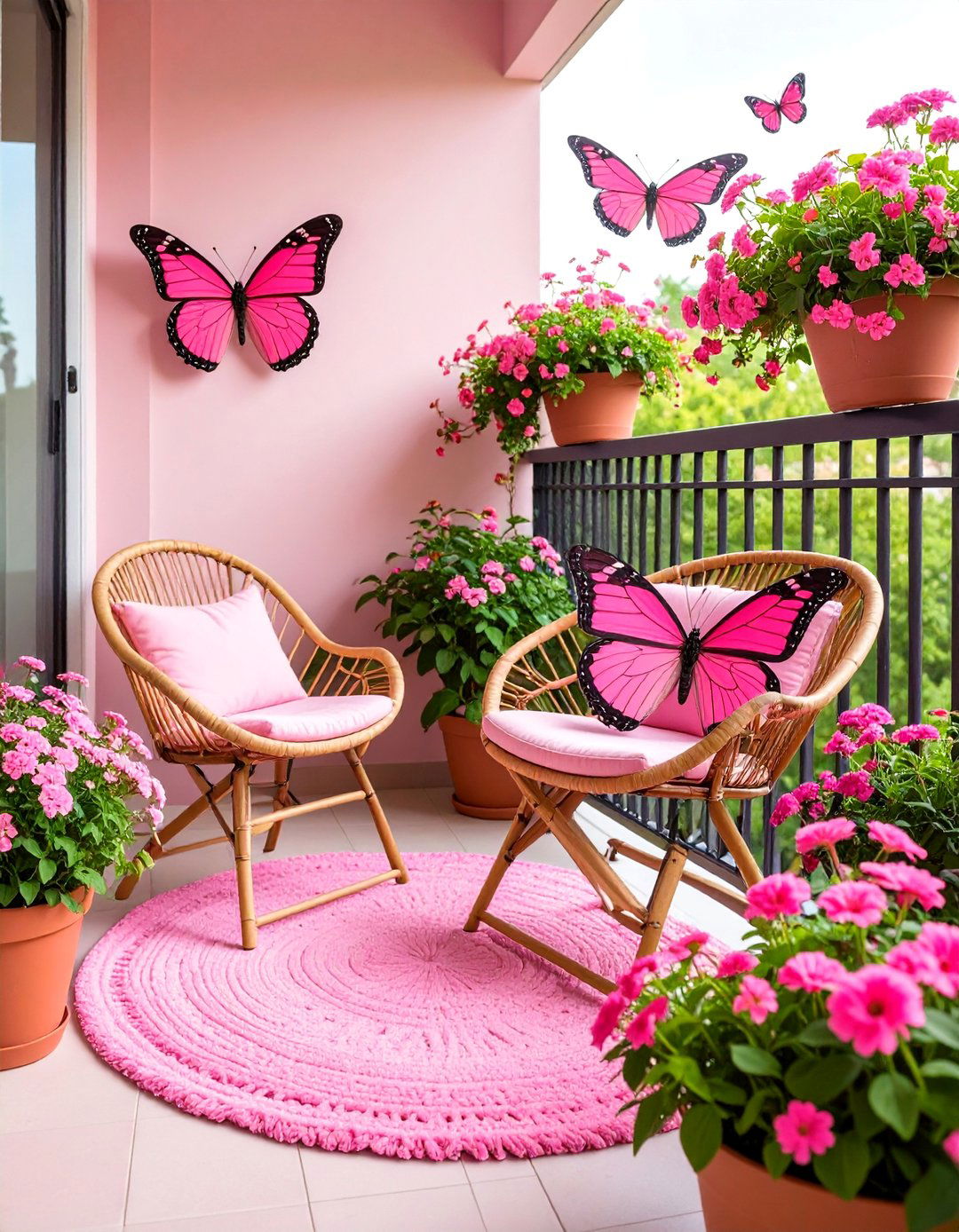
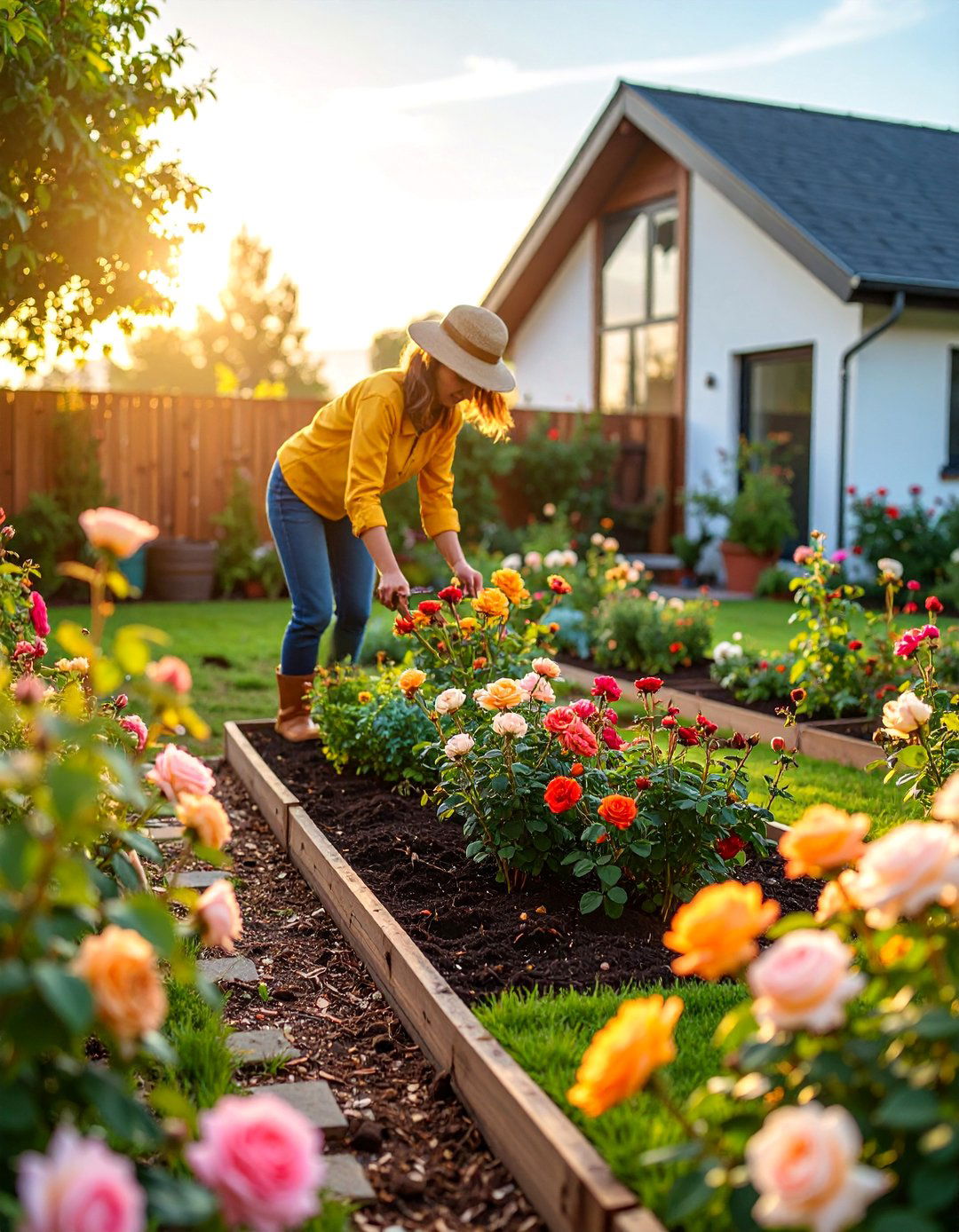
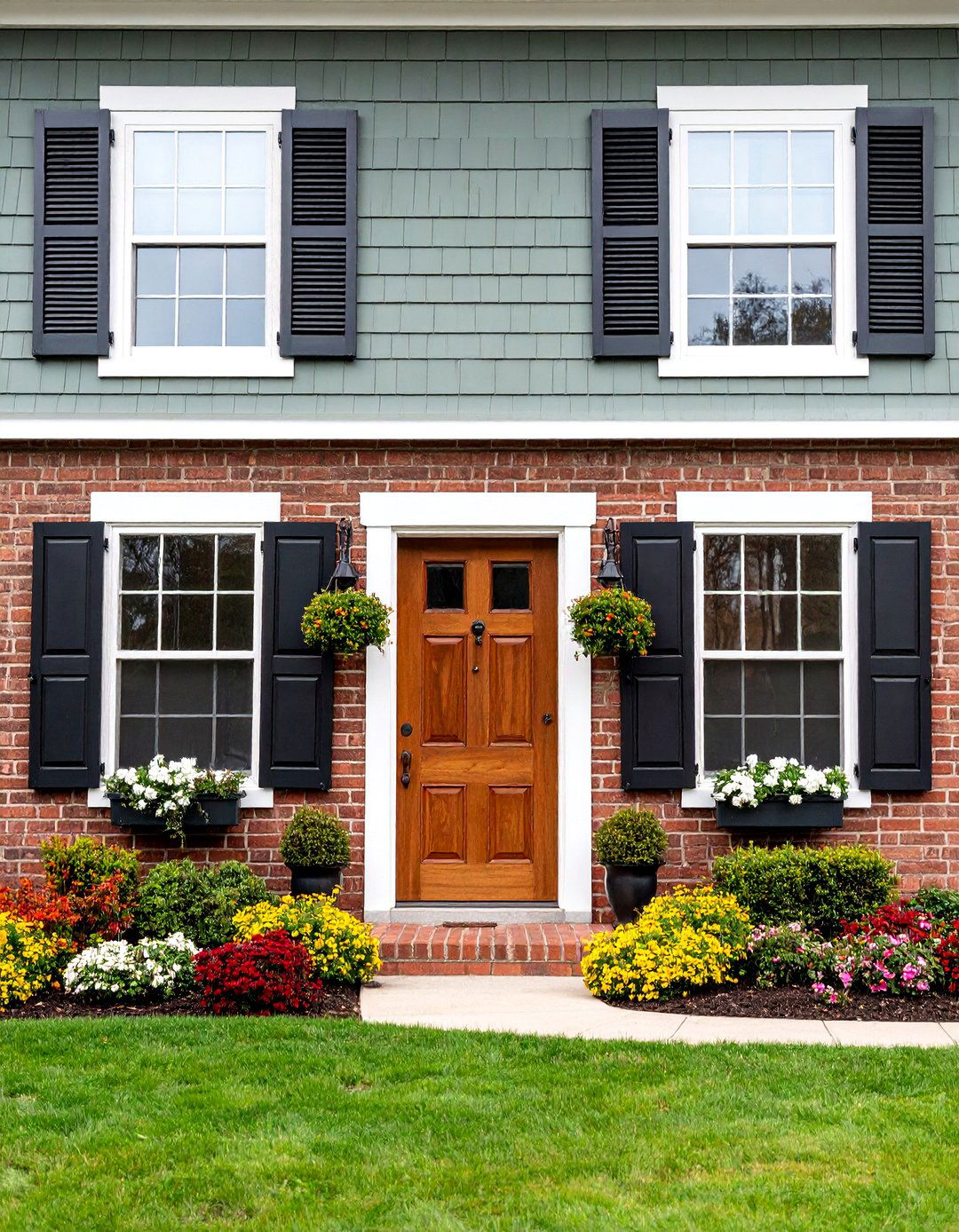
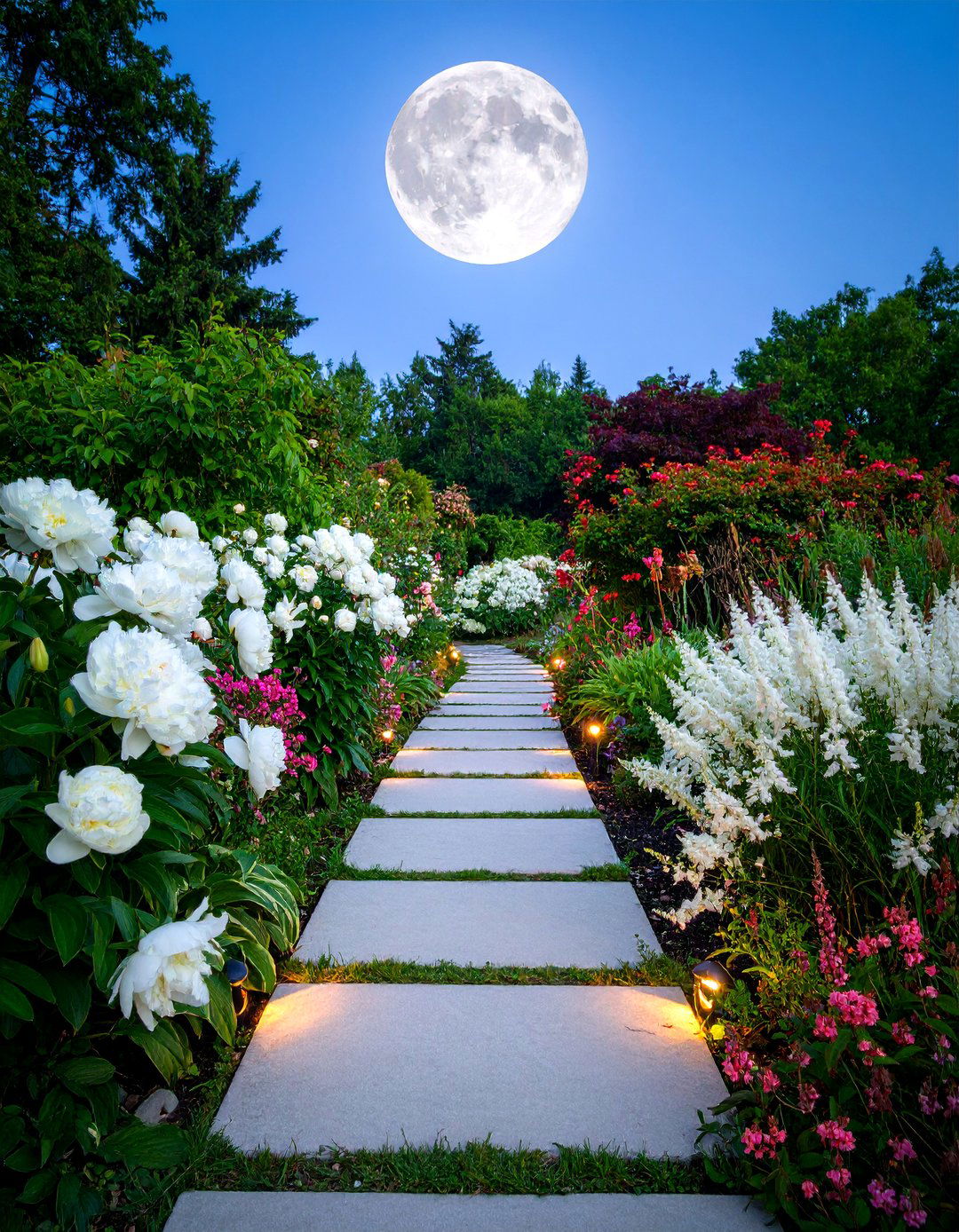
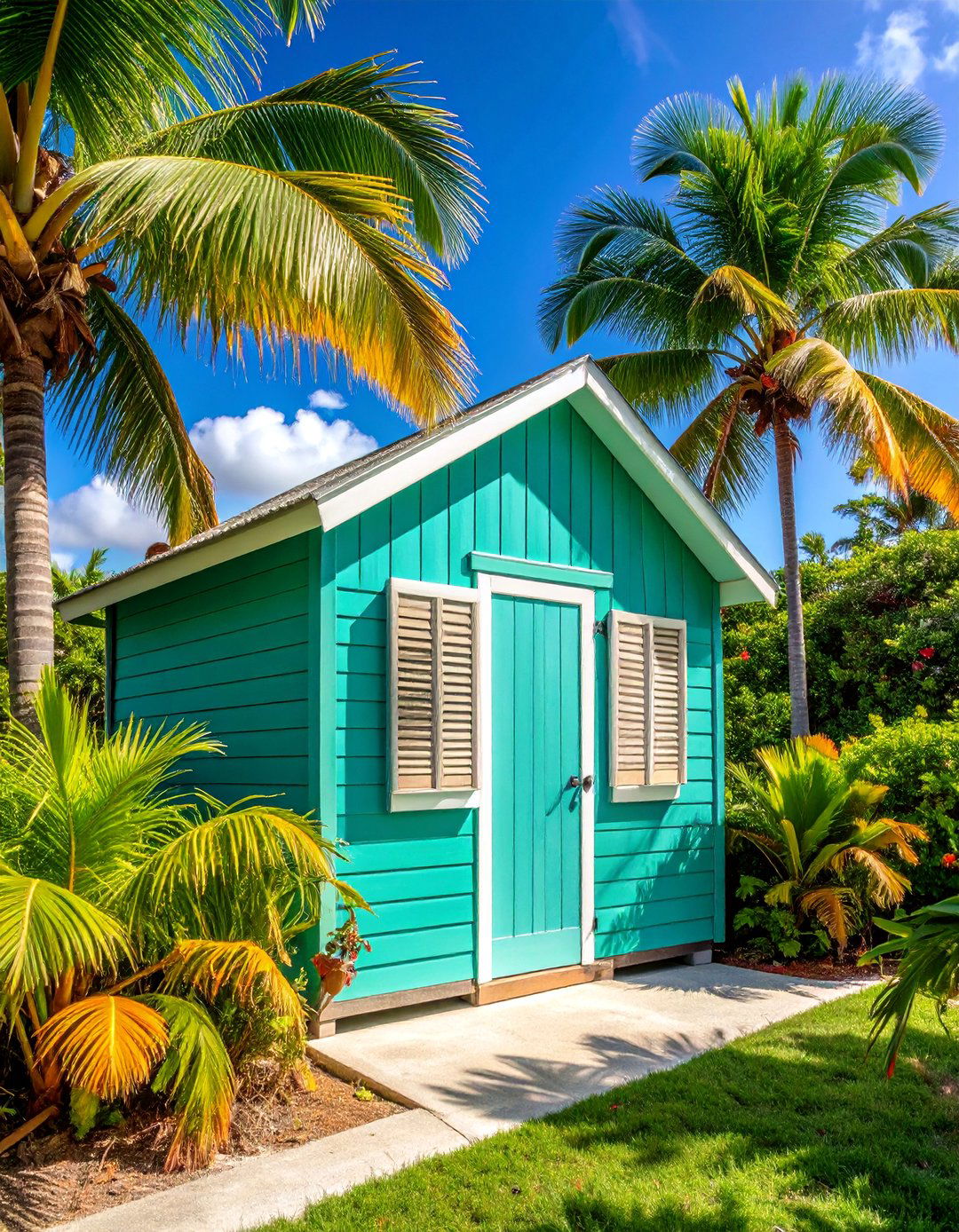
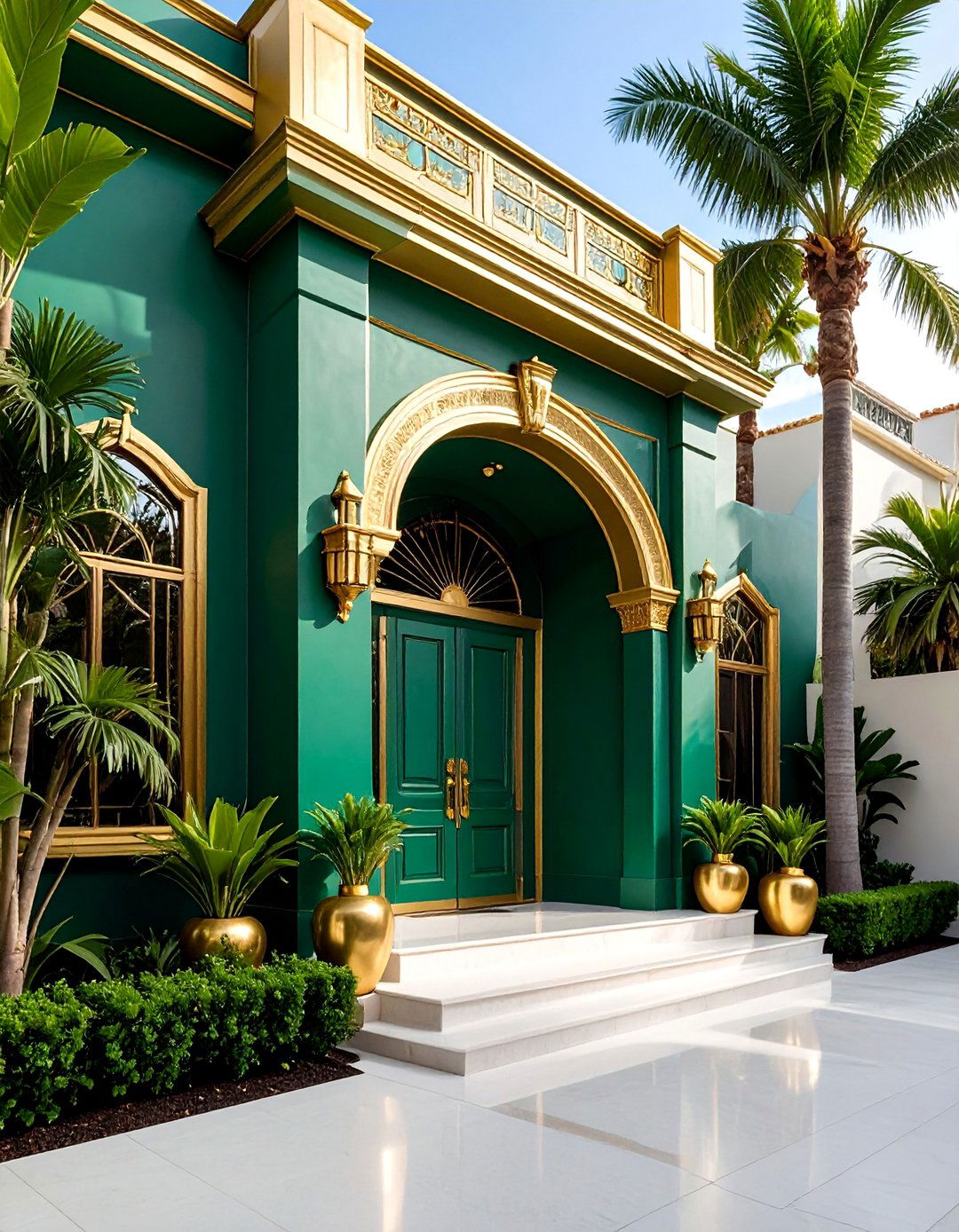
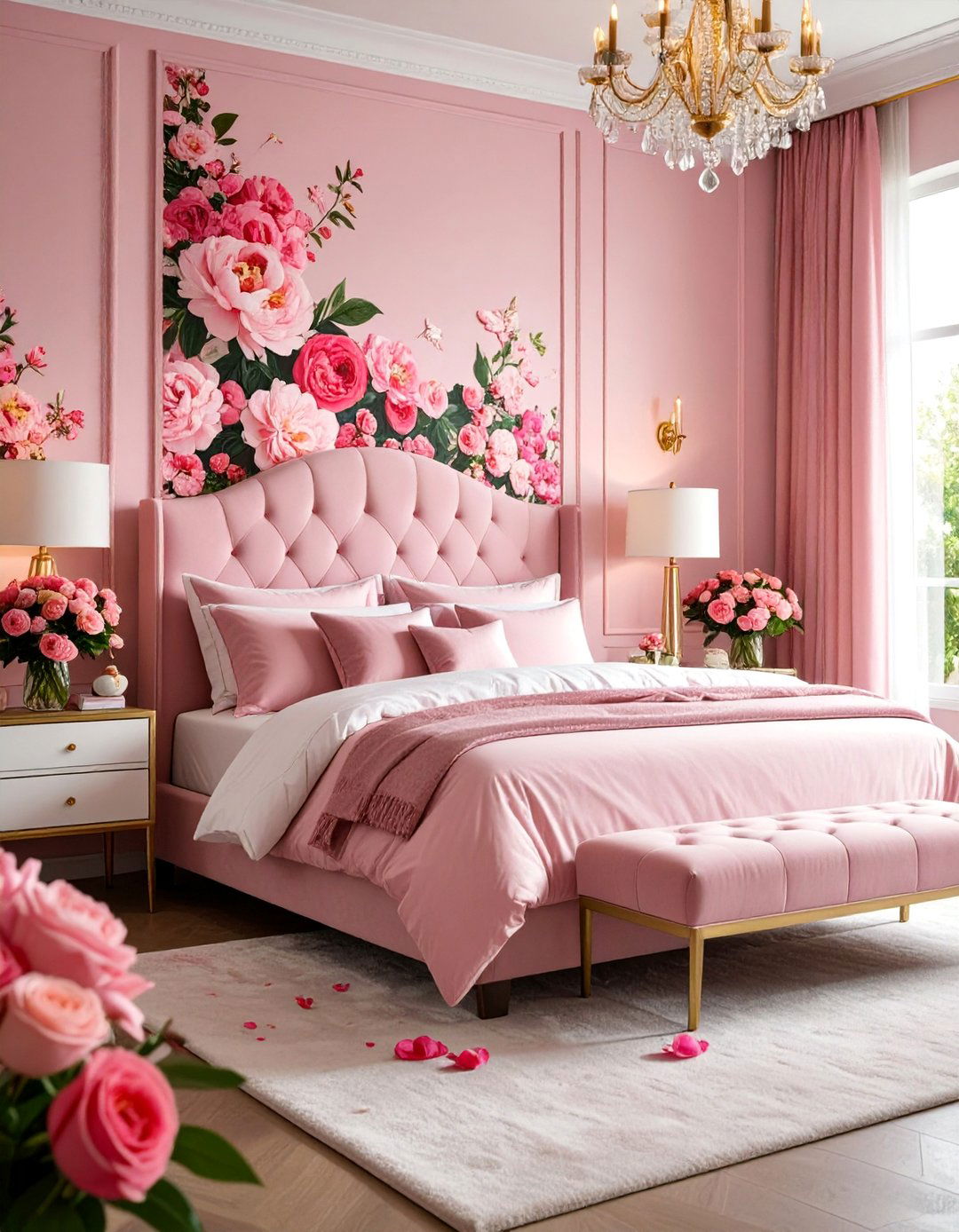
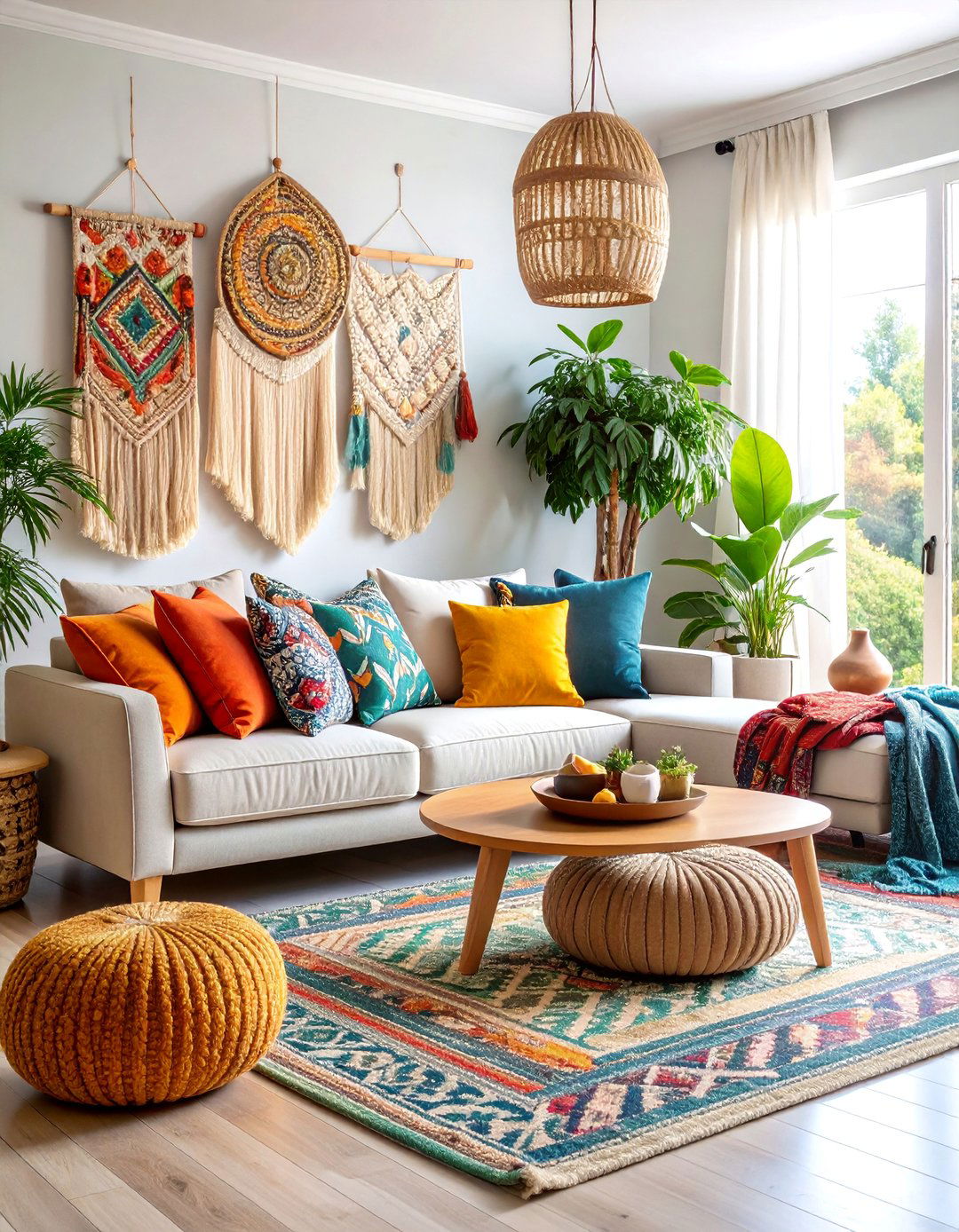

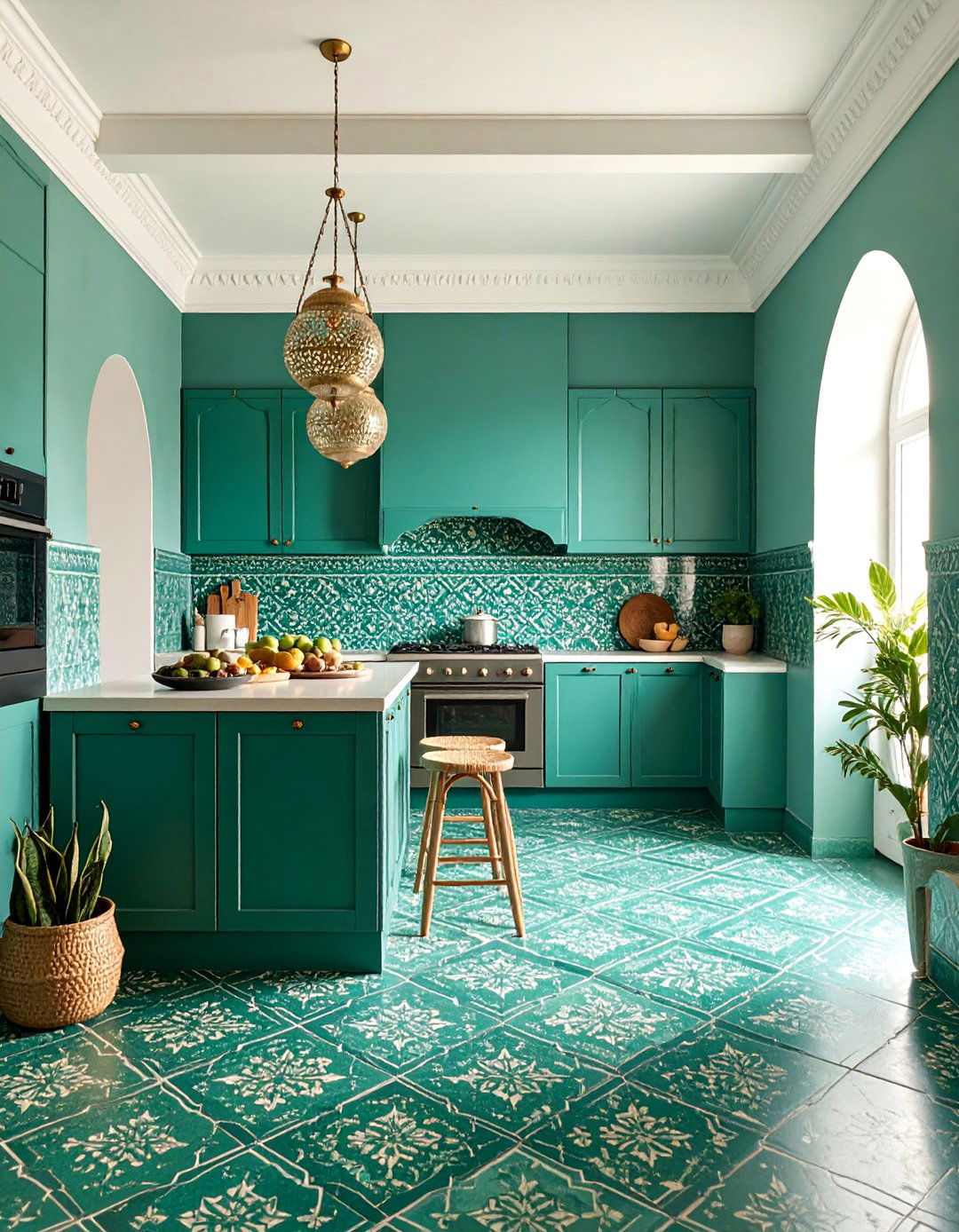
Leave a Reply